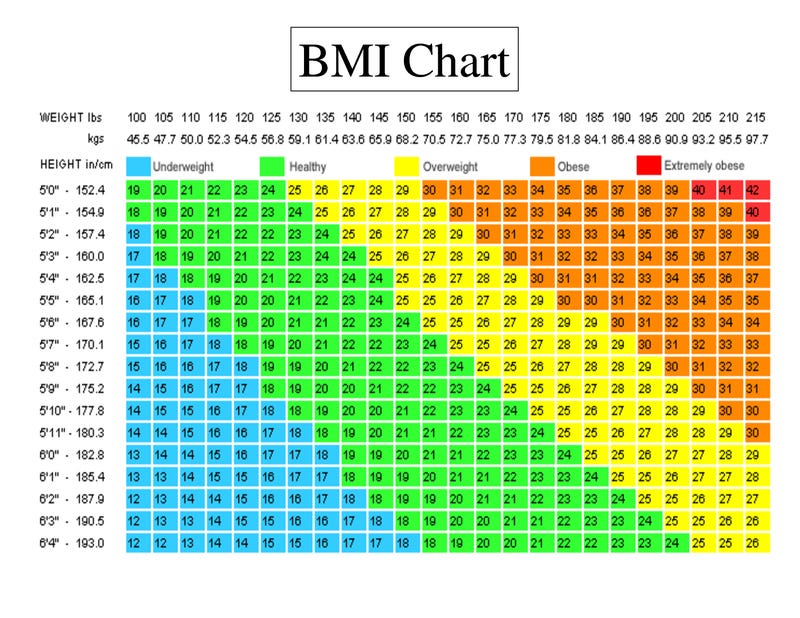
Knowing your numbers is imperative in setting and achieving your weight loss or weight gain goals. Without knowing how many calories your body is expecting, it makes it easy to under or overeat. Thankfully, this article will provide information in order to determine your numbers using mathematical formulas.
BMI (Body Mass Index)
BMI is a relationship between weight and height. It tells whether someone is over or underweight. In obtaining this number, it’s easy to tell 1) whether weight needs to be lost or gained and 2) how quickly it needs to happen. People with higher BMIs need to lose weight more quickly than those closer to normal. This chart below shows BMI as a function of height and weight.

Estimating your BMI is relitively simple. Use the following formula to calculate your BMI.

Once determining your BMI, check the BMI Chart above to see your position. If it’s anything other than green, it’s important to gain or lose weight. On the two opposite extremes, blue and red, the speed at which weight needs to be managed goes up.
BMR (Basal Metabolic Rate)
Once your BMI has been calculated, then determine how quickly to lose or gain weight by finding your BMR. This is a measure of how much energy your body burns on any given day without exercise. This will help aid your decision on how to eat. If weight loss is your goal, be sure to maintain a calorie deficit. If weight gain is your goal, be sure to maintain a calorie surplus.
Estimating your BMR is a little more complex. Use the following formula to calculate your BMR.

Once obtaining your BMR, it’s possible to determine how quickly to lose weight. Remember that a 3500 calorie deficit is equal to one pound of weight loss. Therefore, a daily calorie deficit of 500Cal will translate into 1lb of weight loss in a week’s time. To lose 2lbs a week, your daily calorie deficit must be 1000. Beware of trying to starve your body to lose weight quickly, as this can be dangerous.
MAF (Maximum Aerobic Function)
MAF is an estimate of peak fat burning during a workout. Based on your age, it tells you what heart rate is ideal for fat burning instead of carb burning. MAF provides simple exercise guidelines based on individualized heart rates that work for everyone from sedentary individuals to professional athletes. Tracking the progress of the aerobic system helps predict when strength and speed workouts can produce healthy gains.1

Your MAF heart rate can be easily calculated with the simple formula 180-your age. Once obtaining your MAF (the peak of the orange line above) all that’s needed is a way to monitor your heart rate so as not to go into carb burning territory.

 The Wellness System
The Wellness System